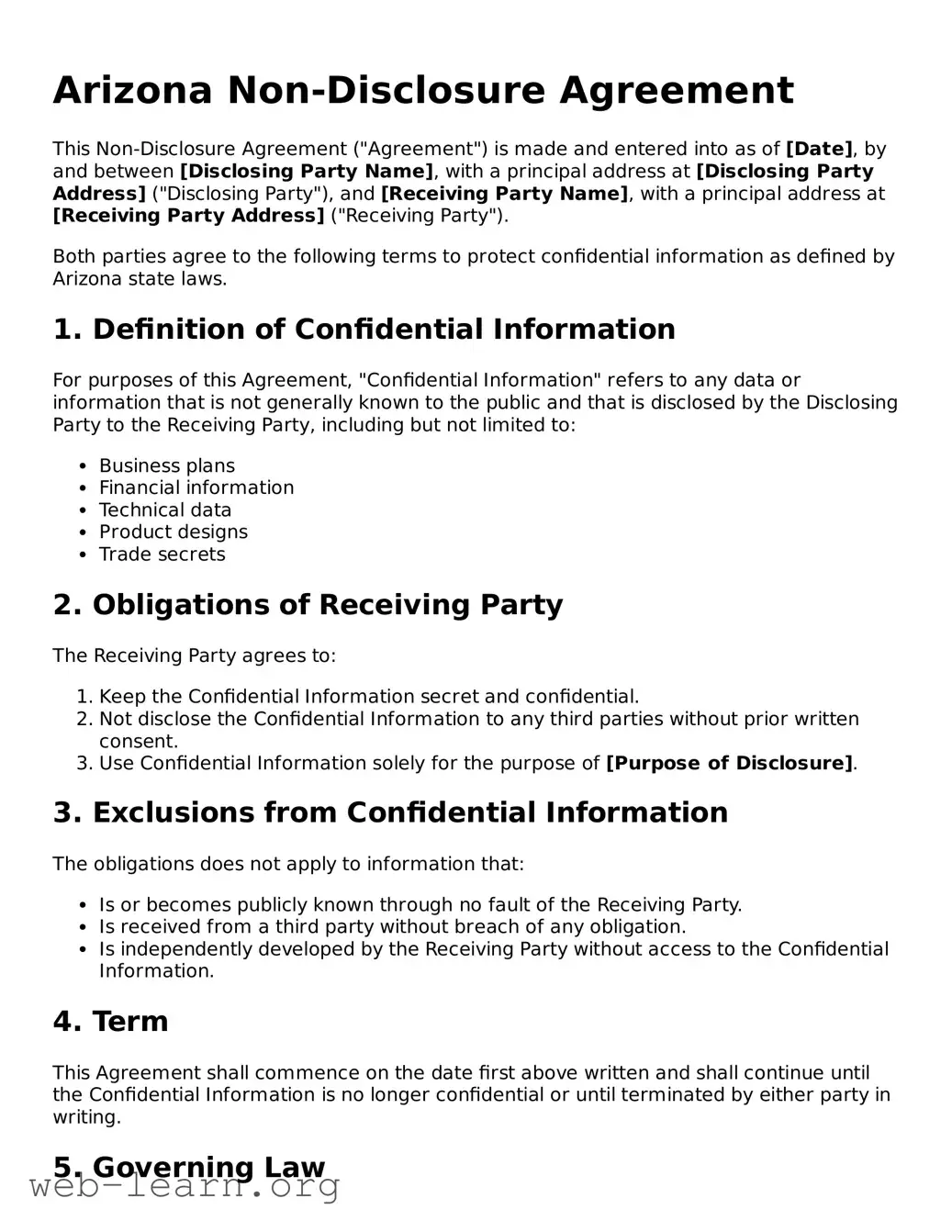Arizona Non-Disclosure Agreement
This Non-Disclosure Agreement ("Agreement") is made and entered into as of [Date], by and between [Disclosing Party Name], with a principal address at [Disclosing Party Address] ("Disclosing Party"), and [Receiving Party Name], with a principal address at [Receiving Party Address] ("Receiving Party").
Both parties agree to the following terms to protect confidential information as defined by Arizona state laws.
1. Definition of Confidential Information
For purposes of this Agreement, "Confidential Information" refers to any data or information that is not generally known to the public and that is disclosed by the Disclosing Party to the Receiving Party, including but not limited to:
- Business plans
- Financial information
- Technical data
- Product designs
- Trade secrets
2. Obligations of Receiving Party
The Receiving Party agrees to:
- Keep the Confidential Information secret and confidential.
- Not disclose the Confidential Information to any third parties without prior written consent.
- Use Confidential Information solely for the purpose of [Purpose of Disclosure].
3. Exclusions from Confidential Information
The obligations does not apply to information that:
- Is or becomes publicly known through no fault of the Receiving Party.
- Is received from a third party without breach of any obligation.
- Is independently developed by the Receiving Party without access to the Confidential Information.
4. Term
This Agreement shall commence on the date first above written and shall continue until the Confidential Information is no longer confidential or until terminated by either party in writing.
5. Governing Law
This Agreement shall be governed by the laws of the State of Arizona.
6. Signatures
By signing below, both parties agree to the terms of this Non-Disclosure Agreement.
_______________________________
[Disclosing Party Name]
_______________________________
[Receiving Party Name]
Date: _______________
